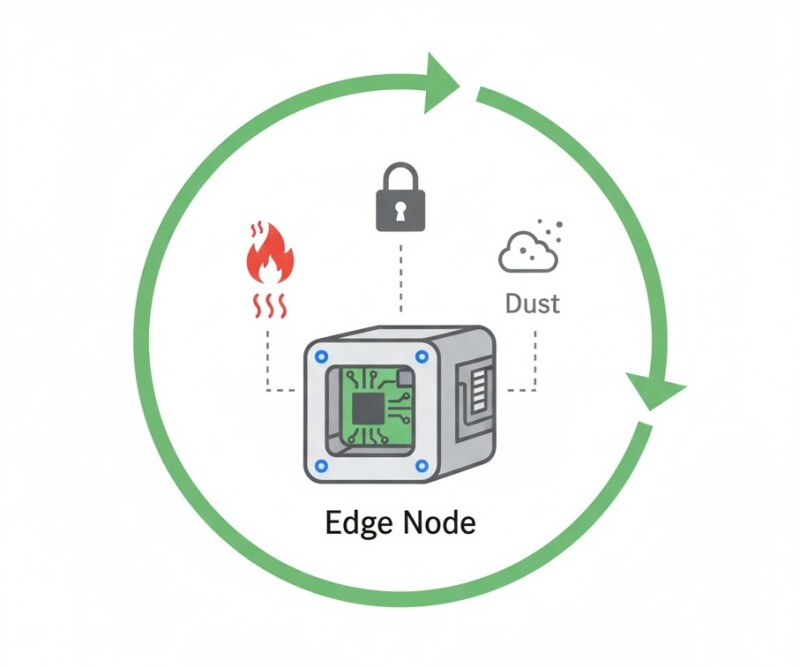Thermals, Enclosures, and Dust: Designing Rugged Edge Nodes
Deploying AI at the edge means running compute in the harshest conditions: vibration, heat, and airborne particulates. A successful design starts with thermal engineering and ingress protection, not software.
Thermal Design Basics
- Maintain junction temperatures below 85 °C for sustained performance.
- Prefer passive cooling with finned heatsinks for reliability.
- Use heat pipes or vapor chambers when airflow is restricted.
Enclosure Protection
- Minimum IP54 for dust and splashes; IP65+ for washdown zones.
- Corrosion-resistant materials (aluminum, powder-coated steel).
- EMI shielding to avoid interference with PLCs and RF sensors.
Dust and Debris Control
Fanless designs prevent ingress but trap heat; filtered fans require maintenance. Many integrators adopt positive-pressure cooling — pushing filtered air outward to block dust intake.
Example Configuration
A Jetson Orin-based vision node in a stamping plant was enclosed in an IP65 box with heat pipe cooling. Operating temperature dropped by 22 °C compared to open mounting.
Related Articles
- Jetson Orin vs Intel iGPU vs AMD: A 2025 Buyer’s Guide
- Real-Time Considerations: Determinism Next to AI
- Lifecycle and Spares: Designing for 5-Year Support
Conclusion
Edge AI systems live in hostile environments. A well-designed thermal and enclosure strategy ensures that intelligence at the edge stays reliable — even under industrial stress.









































Interested? Submit your enquiry using the form below:
Only available for registered users. Sign In to your account or register here.